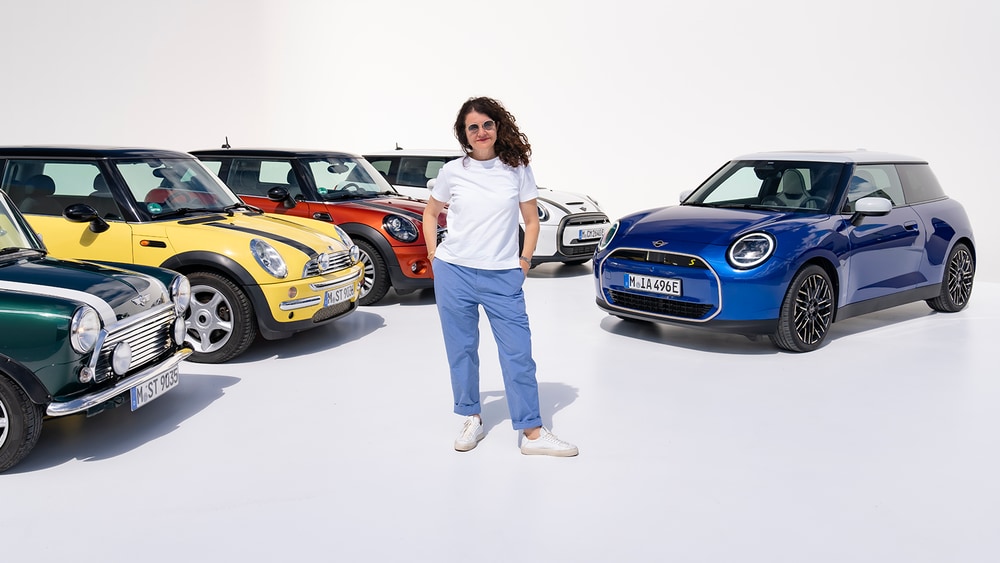Mini’s Transformation Under Stefanie Wurst
In 1959 Mini changed the world. The Mini’s innovative design, the result of an inspired decision by chief engineer Alec Issigonis to mount its engine transversely across the front of the car and send drive to the front wheels, pioneered the layout used by most of today’s mainstream cars and SUVs. In 2024 Mini isn’t changing the world. But it’s helping change BMW, says Mini’s head of brand, Stefanie Wurst.
BMW’s Strategic Testing with Mini
“BMW is testing things with Mini,” says Wurst. “Mini acts as a front-runner,” she notes. “And if Mini can do it, then BMW may eventually.” One example is the trial of a direct-to-customer sales model in Europe that’s being closely monitored by senior executives at BMW Group headquarters in Munich.
Developing Future Executives
Mini is also where BMW is nurturing a new generation of executives for roles across BMW Group, according to Wurst, who took over the Mini division in February 2022 after almost three-and-a-half years as CEO of BMW’s operation in the Netherlands. “Mini is a playground, but in the best sense, for developing people,” she explains.
Leading the EV Transition
Critically, Mini is leading the way in terms of BMW Group’s transition to electric vehicles (EVs). “Electric vehicles are 15.6 percent of our sales now, which is a higher share than the BMW Group,” mentions Wurst. With the rollout of its new EV range, including electric versions of the Cooper hatchback and the Aceman compact EV crossover, Wurst expects that share to grow significantly.
Expansion in Key Markets
“We haven’t yet introduced an electric Mini in China, where the market share of EVs is high and demand is robust,” says Wurst. “With the launch of electric-powered Minis in both China and Japan, which is another significant Mini market, our share will automatically increase.” Consequently, Wurst predicts that EVs will account for more than 50 percent of Mini’s total sales within five years.
Successes and Historical Context
Mini was one of the few success stories from BMW’s otherwise disastrous acquisition of Britain’s Rover Group in 1994. After ailing Rover began to drain resources from BMW, Munich sold Land Rover to Ford and off-loaded the rest of the company while retaining Mini.
The first BMW-developed Mini, codenamed R50, was launched in 2001 and quickly proved successful. With American designer Frank Stephenson’s affectionate reinterpretation of classic Mini design cues combined with a chassis that offered sharp handling, it became popular.
Profitability and Expansion Plans
Stephenson’s two-door Mini hatch transformed into various formats over the years. Despite some failures, Wurst indicates that Mini’s profit margin is today higher than that of BMW or even Rolls-Royce, with the U.S. being the brand’s most profitable market, fueled by demand for highly specified versions like the John Cooper Works models.
Mini sales last year totaled almost 300,000. Wurst believes the all-new Mini lineup, spearheaded by recently launched ICE and EV versions of the Countryman, could boost sales to half a million vehicles annually.
Future Model Lineup
This lineup encompasses the new Mini Cooper S with a powerful gas engine and the Cooper C featuring a more economical option. Furthermore, electric-powered Mini Cooper E and Cooper SE are on the horizon, as well as the upcoming Aceman, a compact four-door EV crossover.
Manufacturing Innovations
The Coopers and Aceman are built on an all-new EV platform developed alongside Chinese automaker Great Wall. Wurst emphasizes the valuable lessons learned about rapid production processes, as the best practices from the Chinese counterpart have streamlined BMW’s operations.
Maintaining Brand Identity
Only one-in-six Mini owners considered a BMW when making their decision. Wurst acknowledges that some customers were initially lost because the Countryman felt too small. However, she affirms that Mini’s strong brand identity can successfully accommodate various vehicle formats while also emphasizing a viable business case.
Looking Ahead
Wurst hints at an upcoming electric-powered Mini Convertible, a direct result of the overwhelming demand for limited releases of the previous electric version. Additionally, the John Cooper Works performance brand will expand to incorporate both EV and ICE models.
In conclusion, when asked about Mini’s biggest challenge, Wurst cites the mindset of the brand within the larger group. “We have to stop thinking of ourselves as a small brand. We are a brand of small cars, but we are not small. We are mighty,” she asserts.




